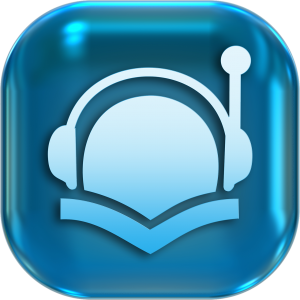The Rise of Screen Recording Software

HeScreen recording software has evolved from obscure utilities mainly used by tech professionals to versatile tools harnessed by a wide spectrum of personal and commercial users. The capability to easily capture, edit, annotate and share recordings of on-screen activity has fueled rapid adoption across industries and use cases. This essay provides an overview of key developments that have shaped modern screen recording software into accessible, featurerich applications providing immense value for workflows that leverage visual information.
Early Prototypes & Niche Use
Like many ubiquitous technologies, screen recording capabilities trace back to rudimentary government and research origins before accessible consumer adoption. As early as the 1950s, basic screen output capturing functionality was developed for niche military and aviation contexts at institutions like MIT. Through the 70s and 80s nascent commercial solutions emerged but hardware limitations restricted use to software development debugging and user testing capture. Complex configuration was required and output files were often unusable without proprietary players. While useful for select technical applications, screen recording had yet to develop into broadly viable software…
The Rise of Demo Recording
By the early 1990s PC computing power expanded possibilities for software designers and gamers who drove early consumer level experimentation with screen recording. Utilities like Hypercam and Camtasia arose to meet demand for easily creating demo videos of programs and gameplay moments to share with wider audiences. Recording and encoding capabilities improved steadily through the 90s as video compression and processor speeds capable of handling richer onscreen activity advanced. Though still fairly crude, early screen recording tools moved digital video creation beyond just traditional video camera capture. The capability to document and distribute screen interactions became gradually more accessible.
Maturing Capabilities for Business
As connectivity and video distribution channels matured in the early 2000s alongside rapid growth of eLearning and web conferencing, reliable screen recording became a requirement for marketing departments and online course creators. Markets emerged around signing up remote viewers, recording webinars, and tracking online ad engagement. Platforms like Articulate Storyline, Captivate, Camtasia and Screenflow offered fairly robust enterprise level capabilities by the mid 2000s even if consumer facing options remained limited. The business world drove both innovation and validation of screen recording’s value.
The YouTube Phenomenon
When YouTube burst onto the scene in 2005, it kickstarted an explosion of interest in creating and uploading instructional how-to content. Explainer videos covering everything from software tutorials to recipes, unboxings, video game walkthroughs and more flooded the site driven by creators who often relied on screen capture utilities that were finally mature enough for novice computer users. Adoption skyrocketed through the late 2000s as the charisma of web personalities attracted huge audiences to their video channels. Suddenly all those niche use cases that previously had narrow appeal became fodder for millions of views, igniting new economic opportunity.
The Rise of Streamer Culture
As internet speeds and video game graphics evolved through the 2010s, services like Twitch and Steam saw meteoric rise of streamer culture – online personalities broadcasting videos of their gameplay live to loyal fan communities. This represented a major inflection for screen recording utility as real-time editing and annotation became critical. No longer just capturing raw desktop action, this new generation of software incorporated layers of webcams, custom graphics, mobile device integration, chroma keying and options to publish edited highlights for fans to re-watch after live sessions. The social phenomenon expanded contexts where capturing and distributing screen activity created value both for creators and audiences.
Democratizing Game Development
Another growing application for screen recording through the 2010s has been rapid prototyping and game development. Platforms like Unity and Unreal Engine combined with asset sharing marketplaces have opened up professional grade tools to hobbyists. Key capability powering this democratization has been bidirectional screen recording utilities purpose-built for animating character models, building 3D environments, and coding gameplay logic through a visual programming interface. Features like variable speed scrubbing and bookmarks cater specifically to crafting interactive rather than just linear screen experiences.
Enterprise Collaboration In The Cloud
As remote and hybrid work models expand, screen recording has also evolved into a core capability underpinning enterprise team coordination. Cloud platforms like Loom, Screencastify and Vidyard offer easy asynchronous sharing of quick screencast updates. These bite-sized video snippets embed easily into productivity suites like Slack, Google Workspace and Notion to align distributed co-workers. The software has moved far beyond just documentation to become a fluid medium enabling collaboration. Recording small pieces of dynamic screen real estate improves clarity and reusability compared to just sharing static screenshots or verbose text descriptions.
Conclusion & The Metaverse Future
From niche technical utilities to platforms powering the creator economy and enterprise teamwork – screen recording capabilities have expanded enormously over the past 30 years in tandem with computing power and connectivity improvements. And looking forward, trends like augmented reality, virtual spaces and holographic computing point to increased need to capture dynamic screen interactions as technology progresses. Whether prototyping metaverse experiences, documenting product simulations too complex for static images, or analyzing data visualizations – emerging use cases will further revolutionize screen recording software innovation.
Let me know if you would like me to clarify or expand on any aspects of this screen recording software history overview. I’m happy to provide additional detail on specific evolutions and applications if helpful. Please also feel free to offer any feedback on areas where the analysis could be strengthened with more examples or additional dimensions.








